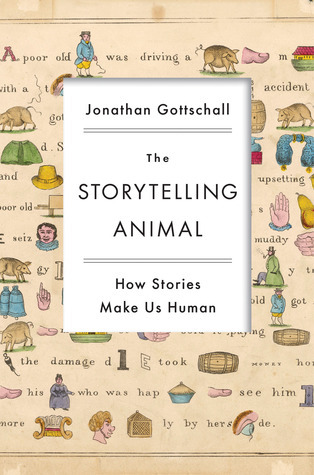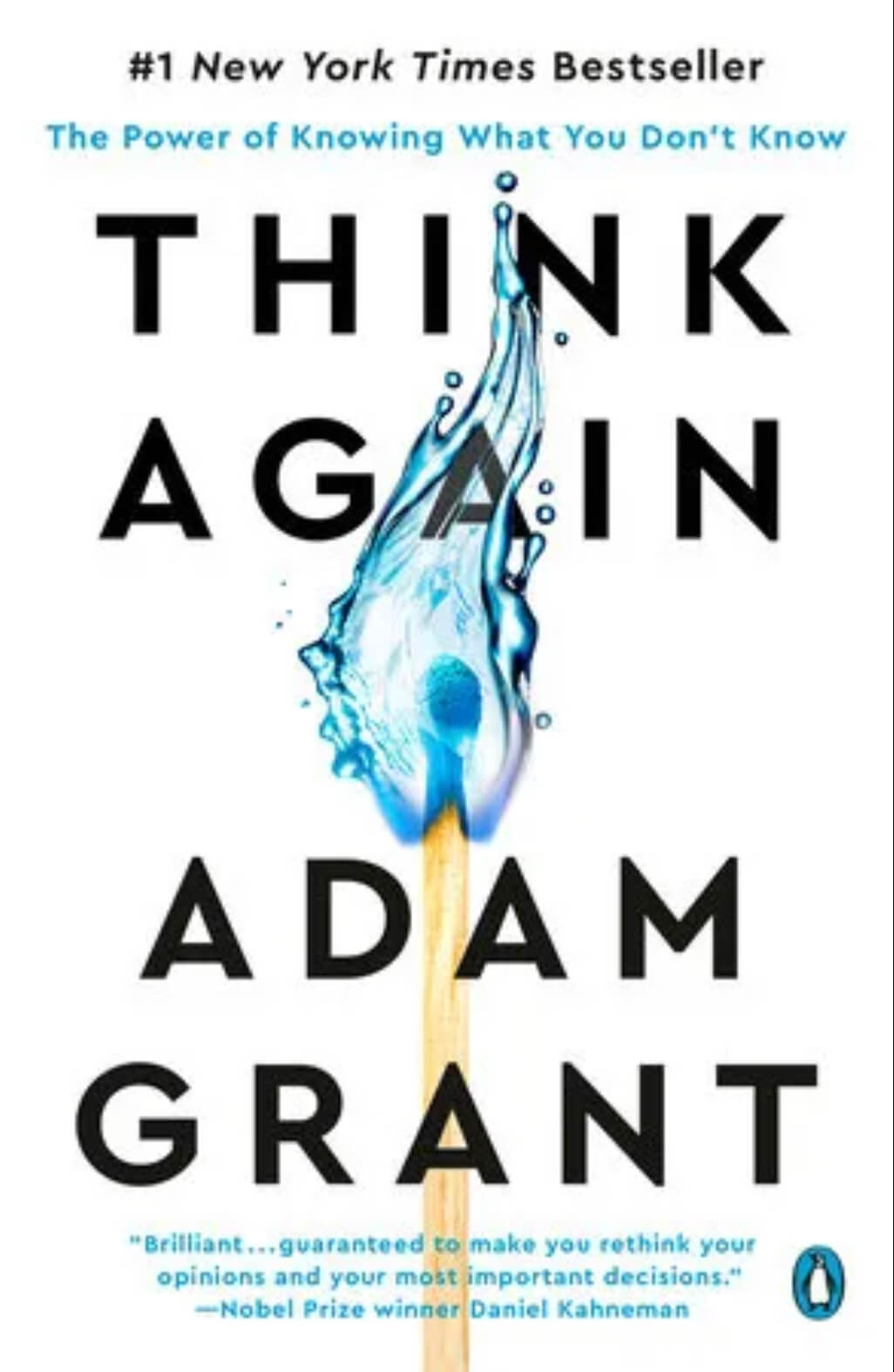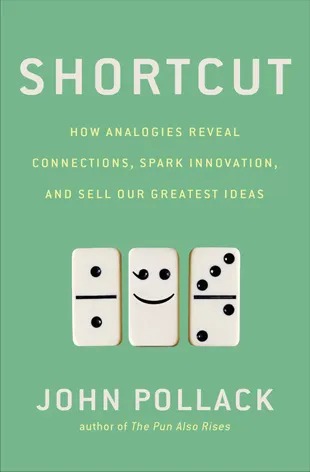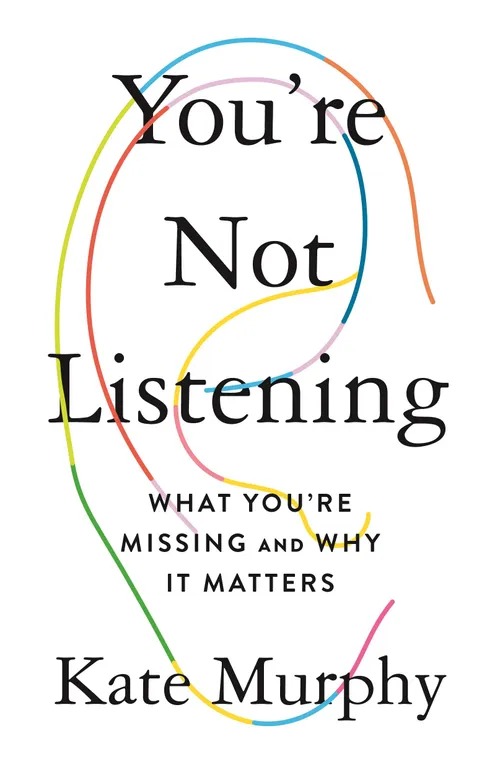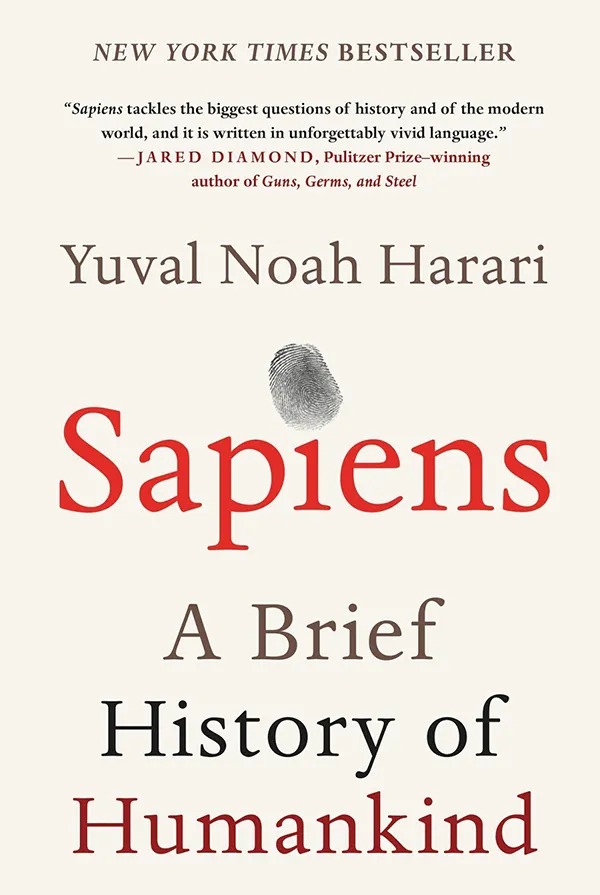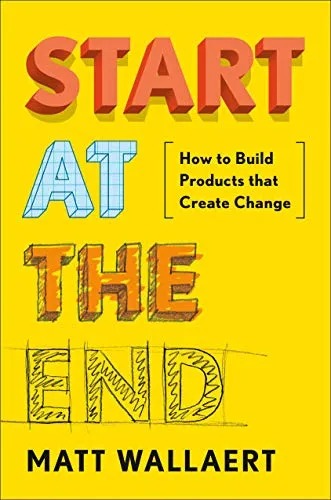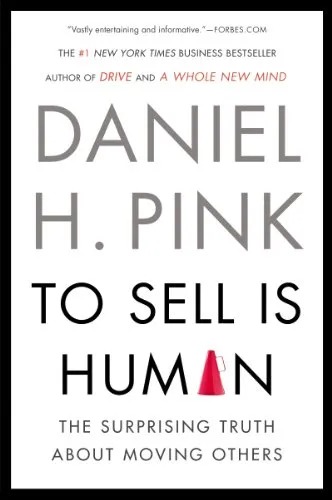13 Books That Belong in Your Library
Category: Book ReviewIf you’re like us, you jot down book titles to look up later. You take pictures of covers at the airport bookstore. Then, you buy them thinking you’ll read them soon.
Those lists, photos, and stacks of books collect dust most of the time. They become sad reminders of knowledge you wanted to acquire. Now and then, you find yourself with a free Saturday or an upcoming vacation, and you think, “This is it. This is when I will read that book.”
But which book? You’ve got dozens to read. Which is worthy of your time, attention, and the limited space in your carry-on luggage?
To help you pick, we read and listened to dozens of books over the past year. A few of them changed us. They transformed how we think and upended how we approach our business, clients, and brands. We’ve included the best of those books here. So the next time you’re looking for something to read, you’ve got recommendations from people with an insatiable curiosity like you.
A few pages into The Storytelling Animal, Jonathan Gottschall immediately demonstrates that stories are much more than tools for communication – they are the language of the brain.
Gottschall explains that people get so engrossed in narratives like Hogwarts, pro wrestling, or home improvement shows because the mind looks for characters, conflict, and conclusion. So when there’s a story, people light up. And when there’s not, they seek stories out.
But stories are more than entertainment. Stories help us understand the relationships between people, events, and ideas. And when immersed in a narrative, people leave reality and enter the story. There, they are more likely to change their mind, be influenced by new ideas, and make new choices. That makes stories an invaluable tool for brands. Because in a world where options are abundant, the brands with the most engaging narrative win.
Nancy Duarte is the mother of data-driven storytelling. Her book, DataStory, is an informative, practical guide to getting better at convincing others with data.
The book’s thesis is that stories aren’t just window dressing or decorative elements sprinkled through presentations to make them more attractive. Instead, professionals should use story structure to organize and communicate data. Doing so transforms presentations from data dumps to narratives that explain the what, why, and what’s next.
Duarte’s approach is powerful because she respects the data as much as she appreciates the story. Looking to create more emotional impact, many storytellers underrepresent the data. But Duarte centers her approach on the data. She calls it the “DataPOV” – the observations, understandings, and ideas emerging from the data on their own. The data shape the story, establish its boundaries, and determine what the story can promise its listeners. The outcome is a story that inspires action, consideration, and even transformation without losing the confidence-building power of data.
Think Again: The Power of Knowing What You Don’t Know
Adam Grant
“Part of the problem is cognitive laziness … We often prefer the ease of hanging onto old views over the difficulty of grappling with new ones … Questioning ourselves makes the world more unpredictable. It requires us to admit that the facts may have changed, that what was once right may now be wrong.”
Think Again by Adam Grant explores the power of challenging thought processes and the knowledge that results from them. Grant explains that a willingness to be wrong is a critical attitude used by astute thinkers. People learn to shake off old ideas and advance their knowledge by challenging themselves to be disproven. Though it creates discomfort, being wrong gives people the opportunity to reshape their worldview more accurately.
Mastering the exercise of challenging existing knowledge leads people to become skeptics. That’s a good thing. According to Grant, skeptics are often perceived as deniers because they rarely accept information at face value. But skeptics consume new knowledge with an eye toward what was left out rather than just taking it as is. As a result, skeptics spend more time verifying information before they trust it and have more accurate interpretations than their non-skeptical counterparts.
Everyone falls into a rut when it comes to knowledge, but Think Again offers exercises to keep any knowledge professional in elite cognitive shape.
What if the Kit Kat were not just a chocolate indulgence but a ritualized good luck charm for Japanese students? Or, perhaps more significantly, what could the world accomplish if economics began looking beyond simple market transactions to incorporate considerations of the environment?
These are questions posed by anthropologist-turned-journalist Gillian Tett in her latest call to incorporate the anthropological perspective into modern life. Anthro-Vision makes a case for applying the fundamental principles of the often-overlooked social science to business and policy questions. In questioning their own culturally held beliefs and assumptions, individuals can explore the rituals, symbols, and inherent social structures that shape their everyday lives and workplaces. And importantly, they can understand how they might adjust them for a better world.
Anthro-Vision names this thinking “lateral vision,” and Tett believes the implications of such a perspective are far-reaching. It’s a thought-provoking call for greater empathy and curiosity toward the most pressing questions of society and business.
Shortcut: How Analogies Reveal Connections, Spark Innovation, and Sell Our Greatest Ideas
John Pollack
“Because while they often operate unnoticed, analogies aren’t accidents, they’re arguments – arguments that, like icebergs, conceal most of their mass and power beneath the surface. In many arguments, whoever has the best analogy wins.”
John Pollack is no stranger to the power of analogies. As a presidential speechwriter, he helped make complex ideas accessible to the broadest possible audience. In Shortcut, Pollack shares the art and science of analogies and empowers his readers to explain their ideas in more compelling and memorable ways.
Pollack demonstrates how analogies sneak complex ideas into other people’s minds with examples drawn from the real world. New ideas, he explains, inherently face barriers to understanding. That new technology or tricky recommendation is unfamiliar to the rest of the world. They need a bridge from one mind to the other.
Pollack recommends connecting new ideas to familiar ones. For example, does the department operate like a football team? Can a new concept be explained like the framework of a house? When people use analogies, their new ideas borrow a familiar structure and create connections in the listener’s mind leading to clarity and adoption.
Kate Murphy fears the world might stop listening. But all is not lost, and in You’re Not Listening, Murphy walks through the value of really listening and the ways people can get better at it every day.
Great listeners, according to Murphy, demonstrate two key traits: curiosity and empathy. The first, curiosity, is the active element of listening. It’s more than questions. Questions without curiosity feel awkward at best and dismissive at worst. Genuine curiosity is about insight – a desire to learn who a person is, what they’re interested in, and how they think. Done well, recipients of curiosity feel seen and understood.
The second trait, empathy, requires a response. Murphy describes how many people respond by shifting the focus of the conversation to themselves. But empathetic listeners respond by supporting the speaker in telling their story further. At home, at work, or in research, the techniques detailed in You’re Not Listening will offer readers a path to deeper, more meaningful insights into others.
Robert B. Cialdini, Ph.D., is the leading expert in the psychology of persuasion, and Influence is considered a classic. He explores the factors, environments, resources, and tricks that lead to influence, acceptance, and purchase.
Of the many principles in the book, social proof is the most powerful lever of influence. People are social animals, and Cialdini explains how people turn to those around them in moments of uncertainty. They look for evidence from their peers that a choice is correct. If more people choose it, the more right it appears. Cialdini finds that this dynamic favors both choosers and influencers. For example, a salesperson can demonstrate trust by sharing referrals. And a customer can typically rely on the recommendations of peers.
But a summary could never do this book justice. If marketing is anything, it’s about influence. Cialdini’s book offers a wealth of resources, ideas, and insights to help organizations big and small understand how to move customers to choose their product over another.
Sapiens: A Brief History of Humankind
Yuval Noah Harari
“Telling effective stories is not easy. The difficulty lies not in telling the story, but in convincing everyone else to believe it. Much of history revolves around this question: How does one convince millions of people to believe particular stories about gods or nations or limited liability companies?”
Yuval Noah Harari compresses thousands of years into a straightforward, cohesive story in Sapiens. Along with the evolution of humanity, Sapiens offers the curious marketing professional insight into the origin of brands.
Harari explains that once homo sapiens embraced myths, they could organize themselves around abstract concepts rather than concrete objects. These shared narratives created meaning from the chaos of a complex world. Consequently, they opened the door for religion, culture, and nationality, where groups of people could collaborate and innovate around shared goals or values. According to Harari, brands work the same.
A well-known brand shifts the way people see the world and the brand’s role in it. Think Apple, Harley-Davidson, Nutella, or Tata. Each has built a loyal following around a set of shared beliefs about their categories. Sapiens suggests that brand marketing is really about marketing myths.
Tom Vanderbilt’s book is part autobiography, part self-help, part psychology. In Beginners, he explores the joy of learning, experimenting, and exploring without the pressure of mastery and demonstrates how it paradoxically leads to tremendous success.
According to Vanderbilt, the learner’s journey starts with the Beginner and Advanced Beginner phases. First, Beginners learn the rules, the techniques, and the process – critical to learning any new skill. But the Advanced Beginner steps into the world to see how those rules get broken. Most people give up here because they hold too rigidly to the core techniques. But that feeling of failure is what develops skill. Wisdom knows when and how to break the rules.
The principles detailed in Beginners are critical for anyone in a knowledge profession – especially marketing, where the dynamics of the marketplace often break the rules of the industry. Vanderbilt offers personal experience and academically backed techniques to help marketers navigate (and enjoy) the unpredictable and uncomfortable paths to insights.
A More Beautiful Question: The Power of Inquiry to Spark Breakthrough Ideas
Warren Berger
“If you fear not having answers to the questions you might ask yourself, remember that one of the hallmarks of innovative problem solvers is that they are willing to raise questions without having any idea of what the answer might be.”
Warren Berger has traveled the world of inquiry and created A More Beautiful Question as a guidebook. In it, he builds the case for questions and presents a variety of models for becoming a better questioner.
Questions, according to Berger, are at the heart of progress. Considering that Google provides thousands of results in response to a question in the blink of an eye, Berger points out that answers have become a commodity. Therefore, the value lies in better questions.
Berger offers the “Why? What if? And How?” framework to craft more beautiful questions. Asking “Why?” focuses on understanding the problem or state of the world, and asking “What if?” enables teams to imagine the impossible. Finally, asking “How?” brings the whole process back to the tactics. Bursting with examples and case studies, A More Beautiful Question turns teams into engines of inquiry and innovation.
Start at the End: How to Build Products That Create Change
Matt Wallaert
“Better intervention design happens when you have as many potential insights as possible at the beginning of the process – a big, wide funnel of opportunities for behavior change that slowly gets narrower as we home in on pressures we’re able to successfully design interventions around.”
Matt Wallaert is committed to applying academic insights to real-world problems. It’s how he built solutions for some of the biggest brands. Start at the End documents Wallaert’s approach and shares the steps any individual or organization can take to design products that change the world.
Rather than starting the design process with a target consumer or product, Start at the End begins with the end in mind. Wallaert recommends first describing the desired world or goal and the behavior that leads to it. This exercise, according to Wallaert, helps organizations cut through the noise of design. Then, with a clear behavioral statement, designers can begin generating ideas that move the world toward that future.
But the real power of Wallaert’s work is its clarity. Wallaert’s model, called the Intervention Design Process, follows an ethical and intuitive path from goal to design. He breaks down how to test insights, explore motivation, gut check the ethics of an intervention, and run pilots to see what works. Organizations, teams, and professionals who want to change behavior need this book.
Daniel H. Pink explains that everyone is selling something – whether it’s a product, a program, or an insight. In To Sell is Human, he offers ideas for influencing others toward mutually beneficial outcomes.
Pink’s framework asserts that the traditional relationship between buyer and seller is obsolete. No longer are salespeople hoarding details about technical specs, competitors, and cost margins. Instead, savvy consumers have this data at their fingertips and can shop from competitors while walking the aisles. That means buyers have as much power as sellers. And success requires a more human-centered approach. Instead of “Always Be Closing,” Pink suggests “Attunement. Buoyancy. Clarity.” The new “ABCs” mean that successfully influencing others requires being tuned into their needs, flexible in the relationship, and clear about what’s on offer.
Pink’s model is relevant in knowledge organizations, too. The best teams avoid order-taking and focus on collaboration to find organizational success. With service at its heart, Pink turns sales of all kinds into an experience that feels good.
While most researchers focus on the cognitive function inside the mind, Annie Murphy Paul has found the power beyond it. Paul explores how thinking can be a physical, contextual, and social exercise in The Extended Mind.
Of the three modes of thinking Paul describes, thinking with other people – or socially distributed cognition – provides the most untapped potential. This is because every additional person expands the cognitive power of the group. The whole is greater than the sum of its parts.
Paul also describes how groups succeed. She calls it “Groupiness,” and it’s the extent of coherence among the team members. To create “Groupiness,” Paul recommends learning together, training together, feeling together, and engaging in rituals together. These four practices allow teams to develop bonds and sync at a cognitive level. The Extended Mind introduces concepts that will lead any team to better, broader, and more thoughtful ideas than ever before.
Sign up for industry updates:

